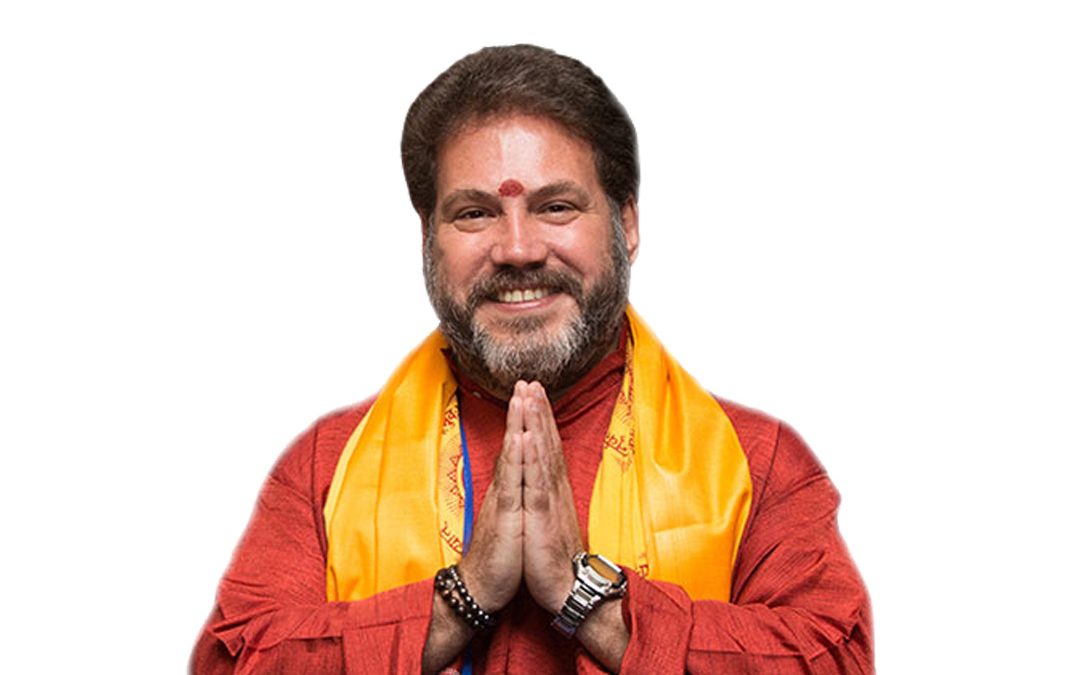Yoga Vidya Niketan (YVN), Member Institute of Indian Yoga Association successfully conducted its annual one-month Yoga Summer Course from May 1 to May 31, 2024. The course ran for one and a half hours daily across 41 physical centers around Mumbai and Navi Mumbai, extending…
The art and science of Yoga aims to help us regain our psycho-physiological balance by removing the root cause of the disharmony (duhkha samyoga viyogam yoga samjnitham — Bhagavad Gita VI: 23).
Yoga understands health and well-being as a dynamic continuum of human nature and not a mere state to be attained and maintained. The lowest point on the continuum with the lowest speed of vibration is that of death whereas the highest point with the highest vibration is that of immortality. In between these two extremes lie the states of normal health and disease. For many, their state of health is defined as that state in which they are able to function without hindrance whereas in reality, health is part of our evolutionary process toward divinity. The lowest point on the dynamic health continuum, with the lowest speed of vibration may be equated with the lowest forms of life and mineral matter, while the highest point with the highest speed of vibration may be equated with divinity.
Yoga aims at enabling the individual to attain and maintain a dynamic sukha sthanam which may be defined as a dynamic sense of physical, mental and spiritual well-being. The Bhagavad Gita defines Yoga as samatvam meaning thereby that Yoga is equanimity at all levels (yogasthah kurukarmani sangam tyaktva dhananjaya siddiyasidhyoh samobutva samatvam yoga uchyate — Bhagavad Gita II: 48). This may be also understood as a perfect state of health wherein physical homeostasis and mental equanimity occur in a balanced and healthy harmony.
Saint Thiruvalluvar, the great Dravidian mystic, says in his 1330-verse Thirukkural, a treatise on right living, “Look for the disease, look for the primary cause of it and then treat it.” (noinaadi noimudhal naadi athuthanikkum vaai naadi vaippach cheyal — Tirukkural 948) Most modern doctors and even Yoga therapists seem to have lost their way in the maze and are content managing the manifest symptoms without understanding the real cause.
Maharishi Patanjali explained the primary causation of stress-based disorders through the concept of pancha klesha (psychological afflictions). These are avidya (ignorance of the ultimate reality leading to bodily identification), asmita (a false sense of identification), raga-dvesha (addiction and aversion), abhinivesha (clinging on to life for fear of death), (avidya asmita raga dvesha abhinivesha kleshah — Yoga Sutras II:3). Avidya as the root cause enables other kleshas to manifest in different forms from time to time. They may be dormant, attenuated, manifest or overpowering in their causation of pain and suffering (avidya kshetram uttaresham prasupta tanu vicchinna udaranam — Yoga Sutras II:4).
Dvaitam, or the misplaced sense duality (due to avidya, the mother klesha), is the main initial cause of the imbalance at the higher level that may then manifest into the lower levels through psychosomatic stress mechanisms. This occurs through the various koshas (aspects of the human existence) as a range of disorders depending upon the propensity (due to sanchita karma) of the individual.
Yoga Vasistha, one of the great classical Yoga texts, describes the causation and manifestation of disease (vyadhi) in an admirable manner. (I often joke with my students that this text is the first recorded counseling session in human history — the Bhagavad Gita is, of course, the second!) In the dialogue between the great sage Vasistha and Prince Rama, it describes both psychosomatic (adhija vyadhi) as well as non-psychosomatic ailments (anadhija vyadhi). Samanya adhija vyadhi are described as those arising from day-to-day causes while sara adhija vyadhi is the essential disease of being caught in the birth–rebirth cycle that may be also understood in modern terms as congenital diseases (caused due to sanchita karma). The former can be corrected by day-to-day remedial measures such as medicines and surgery whereas the sara adhija vyadhi doesn’t cease until knowledge of the Self (atma jnana) is attained.
The Guru Stotra from the Vishvasaaraatantra also takes a similar line in saying that the ultimate “wisdom of the self” gained through the Guru destroys karmic bondages from many births (anekajanma samprapta karma bandha vidhahine atmajnana pradanena tasmai srigurave namah — Guru Stotra, verse 9). It is interesting to note that traditional Indian thought views the very occurrence of birth on this planet as a disease and a source of suffering! Thiruvalluvar reiterates this when he says, “It is knowledge of the ultimate truth that removes the folly of birth.” (pirappu ennum pedaimai neenga chirappu ennum chem porul kaanbadhu arivu — Thirukkural 358)
From the Yogic viewpoint of disease it can be seen that psychosomatic, stress-related disorders appear to progress through four distinct phases, as follows:
Psychic phase: This phase is marked by mild but persistent psychological and behavioral symptoms of stress like irritability, disturbed sleep and other minor symptoms. This phase can be correlated with vijnanamaya and manomaya koshas. Yoga as a therapy is very effective in this phase.
Psychosomatic phase: If the stress continues, there is an increase in symptoms, along with the appearance of generalized physiological symptoms such as occasional hypertension and tremors. This phase can be correlated with manomaya and pranamaya koshas. Yoga as a therapy is very effective in this phase.
Somatic phase: This phase is marked by disturbed function of organs, particularly the target, or involved organ. At this stage one begins to identify the diseased state. This phase can be correlated with pranamaya and annamaya koshas. Yoga as a therapy is less effective in this phase and may need to be used in conjunction with other methods of treatment.
Organic phase: This phase is marked by full manifestation of the diseased state, with pathological changes such as an ulcerated stomach or chronic hypertension, becoming manifest in their totality with their resulting complications. This phase can be correlated with the annamaya kosha, as the disease has become fixed in the physical body. Yoga as a therapy has a palliative effect that improves the quality of life in this phase. It does also produce positive emotional and psychological effects even in terminal and end of life situations.
As Yoga therapists, unless we aim to correct the manifest psychosomatic disassociation as well as the underlying ignorant, jaundiced perception of reality in the individual, we are not practicing Yoga Chikitsa (Yoga as a therapy).
Managing and suppressing the manifest symptoms with Yoga techniques is just as good or bad as modern allopathic medicine that focuses primarily on symptomatic management without ever getting close to the real cause of most disorders. How many doctors look at the emotional and psychological issues that are the primary cause of the problem in so many of their patients? Remember, the concept of psychosomatics is not older than a hundred years in modern medicine — a hundred years ago, any doctor who talked about the mind affecting bodily disease risked getting labeled a quack!
Today we find our Yoga therapists making the same mistake in merely treating manifesting symptoms without remedying the real cause. I prefer to call it “Yogopathy!” An example of this Yogopathy trend is when we use Shavasana to manage patients of hypertension quoting research that has shown that Shavasana reduces blood pressure. We seem happy just to bring the blood pressure down for the time being! Real Yoga Chikitsa would try to look for the primary cause of the patient’s hypertension and try to tackle that along with Shavasana for symptomatic management. Without an attempt to do so, it is merely Yogopathy.
Another common example is that of using the left nostril Chandra Nadi Pranayama to lower the blood sugar or using the right nostril Surya Nadi Pranayama to relieve brochospasm, without looking for the real cause of the patient’s diabetes or asthma. When we do this, how are we any different than the modern doctors who prescribe anti-diabetic and sympathomimetic agents for these patients? Where is the real Yoga in this type of therapy? Where is the effort to find and deal with the primary cause?
I recently encountered a Yoga therapist who said that he advised his patients to do their prescribed pranayama while watching television to help them save their precious time! When queried on the fact that “Prana flows where the mind goes,” he retorted that he was talking of therapeutic pranayama whereas I was talking of spiritual pranayama!
The rishis (sages) must be turning in their samadhis!
















